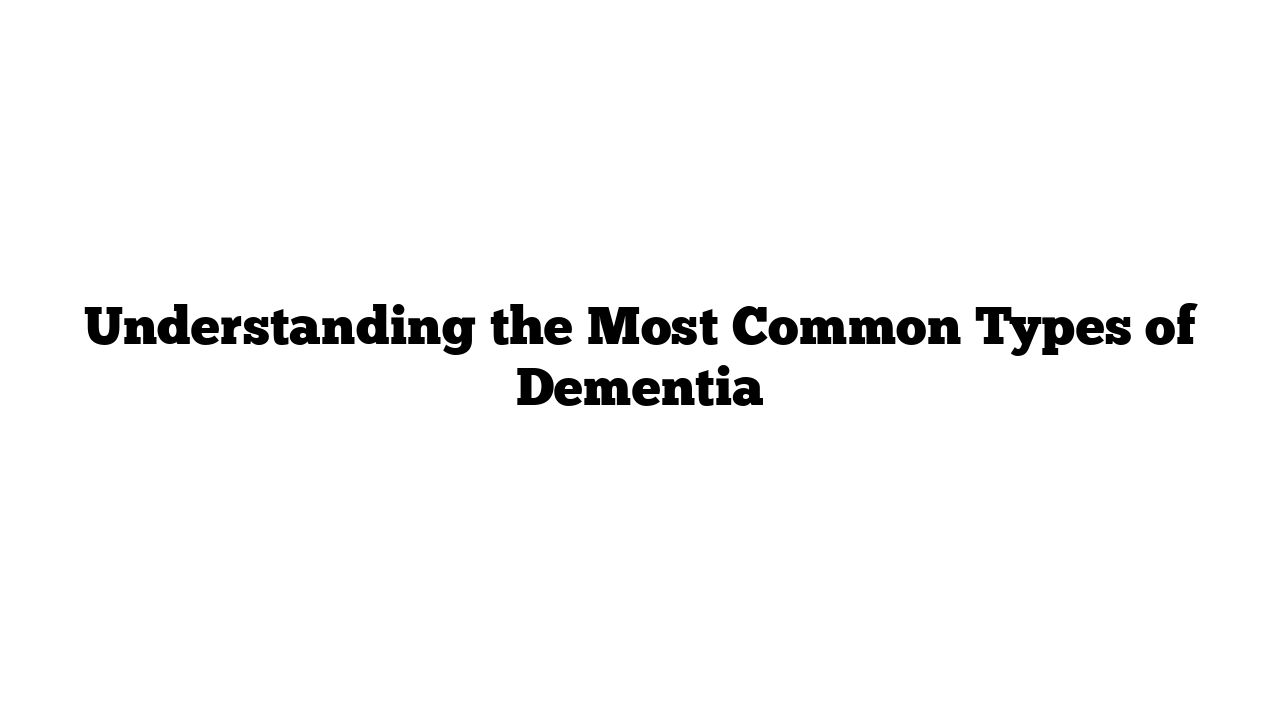Dementia affects millions worldwide, with several distinct types that impact individuals differently. Understanding these types and their symptoms is crucial for effective care and support. Let’s explore the most common types of dementia—Alzheimer’s disease, vascular dementia, frontotemporal dementia, and dementia with Lewy bodies.
What Are the Most Common Types of Dementia?
The four most prevalent types are:
- Alzheimer’s Disease
- Vascular Dementia
- Frontotemporal Dementia
- Dementia with Lewy Bodies
Each type has unique symptoms and progression patterns. It’s important to remember that no two individuals experience dementia in exactly the same way.
1. Symptoms of Alzheimer’s Disease
Alzheimer’s disease is the most common form of dementia, characterized by progressive cognitive decline. Early symptoms are often subtle, but they can escalate over time.
Common symptoms include:
- Memory lapses: Forgetting well-known people or places.
- Word-finding difficulty: Struggling to name everyday objects.
- Emotional unpredictability: Shifts in mood and behavior.
- Social withdrawal: Reduced interest in activities once enjoyed.
- Increased forgetfulness: More noticeable during stressful situations.
These symptoms worsen over time, making early recognition vital for proper care.
2. Symptoms of Vascular Dementia
Vascular dementia is linked to blood circulation issues in the brain. Symptoms vary based on the affected brain area, often overlapping with other types of dementia.
Key symptoms include:
- Confusion: Difficulty understanding or focusing.
- Memory challenges: Issues retaining recent information.
- Restlessness and agitation: Feeling unsettled or irritated.
- Depression: Emotional lows that are often significant.
Symptoms can worsen after strokes or progress steadily over time, depending on the severity of blood flow impairment.
3. Symptoms of Frontotemporal Dementia (FTD)
Frontotemporal dementia primarily affects the brain’s frontal and temporal lobes, causing shrinkage or weakening in these regions. This condition impacts personality, behavior, and communication.
Distinct symptoms include:
- Personality changes: Impulsive actions or lack of motivation.
- Compulsive behaviors: Repetitive actions that may seem irrational.
- Speech difficulties: Trouble forming sentences or finding words.
- Language struggles: Problems understanding or expressing ideas.
FTD often leads to dramatic and noticeable changes, making early intervention critical.
4. Symptoms of Dementia with Lewy Bodies (LBD)
Lewy body dementia, the second most common progressive dementia after Alzheimer’s, is caused by protein deposits called Lewy bodies in brain cells.
Recognizable symptoms include:
- Visual hallucinations: Seeing objects, animals, or people that aren’t there.
- Rigid muscles: Stiffness similar to Parkinson’s disease.
- Slow movement and tremors: Difficulty walking or maintaining balance.
- Sleep disturbances: Acting out dreams or sleepwalking.
LBD often overlaps with symptoms of Parkinson’s disease, making diagnosis challenging but essential for appropriate care.
Why Recognizing Symptoms Matters
Understanding these common types of dementia and their symptoms can help ensure that individuals receive the right care tailored to their needs. Early diagnosis can improve quality of life and enable families to better support their loved ones.
For more expert insights and health tips, visit medicaltimes.io.
FAQs: Frequently Asked Questions
1. What is the most common type of dementia?
Alzheimer’s disease, accounting for 60–80% of cases.
2. How does vascular dementia differ from Alzheimer’s?
Vascular dementia is caused by blood flow issues, while Alzheimer’s is linked to brain cell degeneration.
3. Are hallucinations common in dementia?
Yes, especially in dementia with Lewy bodies, where visual hallucinations are a hallmark.
4. What are early signs of frontotemporal dementia?
Behavioral changes, impulsivity, and difficulty with language are key indicators.
5. Can dementia be prevented?
While not all types are preventable, maintaining heart health, staying mentally active, and eating a healthy diet can reduce risks.
6. Is dementia hereditary?
Some types, like familial Alzheimer’s, have genetic links, but most cases are not inherited.
7. How is dementia diagnosed?
Through a combination of cognitive tests, brain imaging, and medical history evaluation.
8. Can dementia progress quickly?
It depends on the type. Alzheimer’s progresses gradually, while vascular dementia may worsen suddenly after strokes.
9. At what age can dementia start?
While it’s most common after 65, early-onset dementia can develop in younger adults.
10. What treatments are available?
Medications and therapies can manage symptoms, though cures are not yet available.
